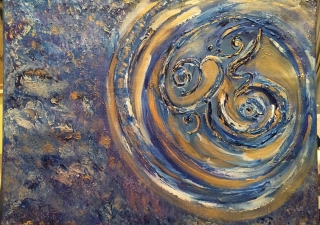Artist Spotlights
Born in Afghanistan, migrating to Pakistan at age six, and then returning to Afghanistan three years later—due to the uncertain conditions within the region—Ahmad Farid Farhan says, “the best hobby I had as a little boy, was drawing and sketching on the walls around our camp.”
Amil Shivji, a filmmaker from Dar es Salaam, Tanzania, feels that “art is not an ideology; rather it is a method of communication.
Nuru Karim is an Indian architect and sculptor who believes that “art must be both experimental and innovative,” and it is exactly this approach that he uses towards his creations.
While working within the Ismaili institutions, Fahim Somani became interested in architectural art projects, especially typography, and was intrigued by the diversity of scripts found in Islamic architecture.
Illustrator and animator Nidal Al-Khalil from Damascus, Syria says that he continues to research and learn about his craft because he feels that “this type of art shall have a positive effect on the receiver.” Nidal feels that words and images can combine to reach different members of society and reveal messages and “clarify vague concepts.” He believes creating a visual culture will “aim to create a balance between cultural, social and behavioral backgrounds.”
As a full-time artist, Aquil’s creative projects are not limited to one medium, but actually encompass art in multiple forms—from portrait paintings, to canvas media, and even documentaries. He says, “positive social impact is at the core of what I do” and explains that “while my artwork ranges in subject matter, the common threads are an enthusiastic engagement with the public, the recent explicit focus on portraiture, and a deep commitment to art that helps create social change.”
Meet Samandar. Born and raised in the Gorno-Badakhshan Autonomous Oblast region of Tajikistan to a Pamiri Ismaili family where music was appreciated and practiced daily.
“I am a self-taught artist and I continue to learn. Finger painting in inks started as an experiment while I was a stay-at-home mom; I also began photography as an amateur but was lucky enough to get selected on Google Plus, where a community of master photographers give back to the artistic community by mentoring amateur and budding photographers on a voluntary basis,” says Sakina.
For Shehzad Noorani, being a photographer isn’t about creating something out of nothing, but rather capturing authentic and genuine moments: “I do not create. I simply observe what is already there and document it with total honesty, with as little influence as possible.”
For young musicians Zaiim (age 15) and Rahy (age 13), art plays an integral role in their daily lives and they view music as a medium that allows people in different societies to connect with their common humanity: “Music is a universal language. Art enhances dialogue and provides a medium to explore opinions. The art of music lends itself to contribute positively, to provide confidence to engage with different societies and removes the barrier of physical language communication.”
“I was born a poet; I pursued writing because of the motivation given by my inspiring teachers.” This is how Hassan describes his affinity to verse and the written word.
Music has always played a big role in Ameera Nimjee’s life. At the age of four she began taking piano lessons and that marked the beginning of a love affair that would eventually see her pursuing a bachelor’s degree in Music.















